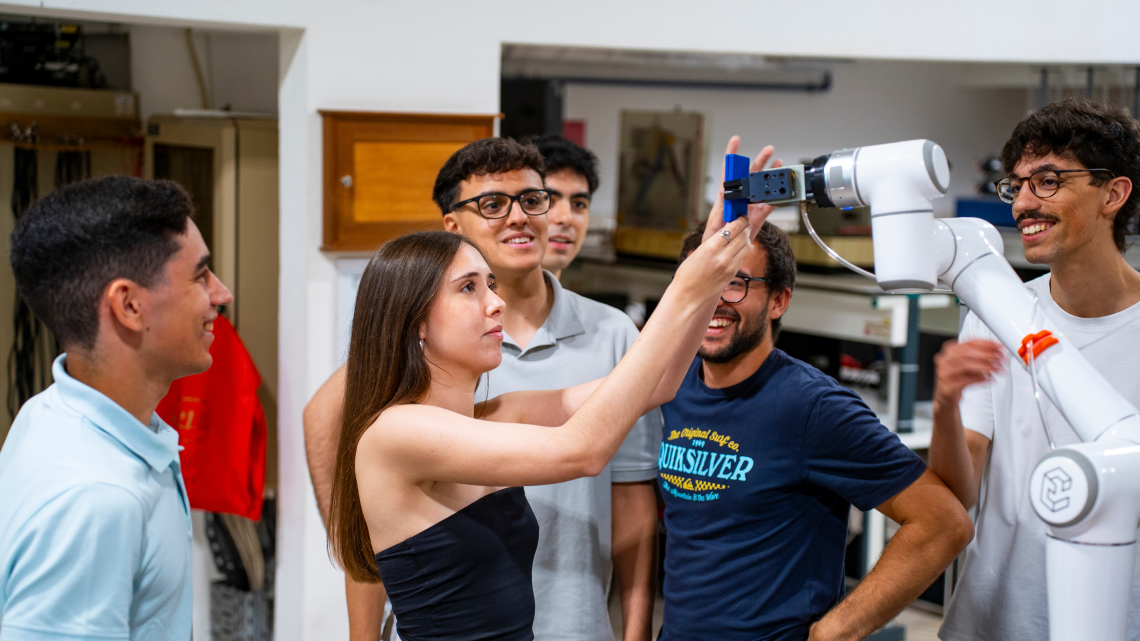Técnico students develop assembly line with two robotic arms for final year project
Eight final-year students (Undergraduate Programme in Mechanical Engineering) have automated a flexible and intelligent production system that could be used in the production of various devices.

In the basement of the Mechanical Engineering Building III at Técnico – Alameda campus, you can hear the noise of the machinery operating there. An autonomous robotic arm places a blue plastic piece on a mobile mat that guides it near the other arm. This second arm picks up the item and places it on the appropriate shelf in a storage area.
The whole process is closely supervised by eight Mechanical Engineering final-year students at Técnico. The work developed by this group culminated in the proper functioning of this machinery, which is part of a ‘Flexible and Intelligent Production System’ – the name given by the students to their 1st Cycle Integrative Project (PIC), presented on 7 June at the first PIC symposium at Técnico Innovation Center, powered by Fidelidade.
This group of finalists set up an assembly line using machinery previously purchased by Técnico. They automated the entire system to produce a final component – the blue plastic piece representing a hypothetical wireless device for charging mobile phones and earphones. This device served as a means of validation, but can easily be replaced by other equipment – the aim is for this system to be flexible, and it could be used to produce several different types of devices.
“I am very proud to say that I didn’t have to look at the lines of code,” says João Costa Sousa, a professor at Técnico and supervisor of this PIC. He has already carried out all the necessary checks, but the initial motto he gave the team was “I want to see this working, not the code commands” – and the students did so, “in a very autonomous way”, he emphasises.
The machine had already been acquired by Técnico “but it wasn’t ready to work yet”, says Bernardo Chagas, a team member and the project manager. “The opportunity arose to be able to continue developing this system and make it fully integrated and functional so that it could be used in other projects, with new products and new features”, explains Bernardo. According to the student the experience of completing a PIC “was great”. “With this project, we were able to apply the knowledge we have learnt from various subjects and, with some autonomy and persistence, obtain a very good result”, he adds.
The process began with training sessions, in which the students had direct contact with the company that supplied the equipment, acquiring the necessary skills and tools to work later and develop the system autonomously.
João Costa Sousa believes it is “essential” to include the PICs in the course curriculum once they “give students a lot of creative freedom”. He believes that the PIC “should be integrative, but it should also give freedom in proposing projects and allow students to do something more related to research, implementation, or product development”. “There are many ways to be an engineer, architect or scientist” and, in this sense, the professor argues that the PIC is an asset, preventing students from becoming just “exam takers”.
